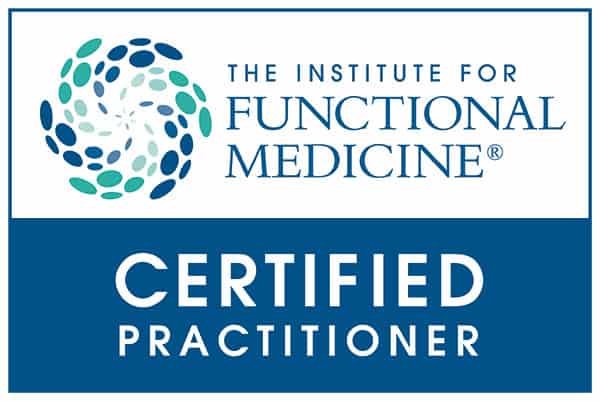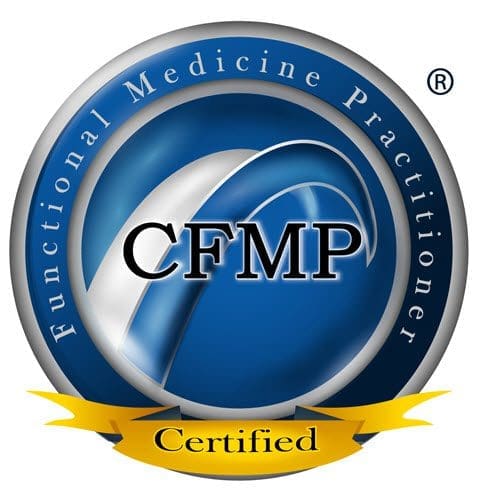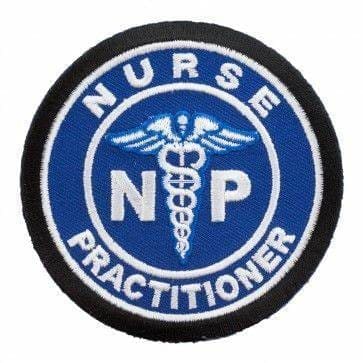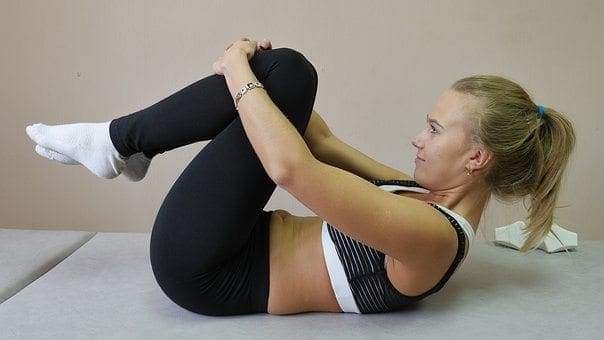
by Dr Alex Jimenez DC, APRN, FNP-BC, CFMP, IFMCP | Chiropractic, Posture, Spine Care
The McKenzie system is a way of evaluating and treating spinal disorders. It’s practiced commonly throughout the entire world. Physical therapists contain the bulk of McKenzie practitioners but physicians and chiropractors practice the process additionally.
Numerous exercise regimens have been recommended for treating spinal pain. Although the dependability of McKenzie’s classification and evaluation system was challenged in the literature, this method of spinal rehabilitation has provided considerable relief of pain for patients that were innumerable. Like all spinal exercise plans, the precise prescription of exercise should be customized to the individual ‘s physical examination findings.
Training
Training includes a sequence of four courses over a specific amount of time culminating in a certification assessment. For many who pursue additional training, a diploma program (consisting of a 3 month residency) is offered. The McKenzie Institute is a not-for-profit organization that oversees the education and training of clinicians that are interested.

Spinal TechniqueIn the McKenzie system, clinicians perform a thorough history and evaluation. This consists of finding the patient’s response to duplicated, end-range spinal movements. The patient is then given a “mechanical analysis.” Most patients are diagnosed with derangement, dysfunction or postural syndromes. Patients are treated by a composite of postural alterations, specific exercises, and in a few instances, spinal mobilization or manipulation.
Common Analysis
The most common diagnosis is the derangement syndrome. It is believed to result from an alteration in the structure and mechanics of the intervertebral disc. In the derangement syndrome, positions and exercises that “centralize” the pain (move it closer to the back) are highlighted. Those movements and positions that peripheralize the pain (move it away from the back) are averted.
Patients Take An Active Role In Recovery
The patient must take an active part in their own healing. The process was created to accomplish favorable results in as few treatments as possible. It is hoped that continuance of appropriate positions of maintenance as well as exercises will prevent recurrence. Patients will probably have the capacity to treat themselves, without intervention, if pain does recur.
The process was examined extensively and is supported by research. For more information, get in touch with a certified professional. Patients are counseled to seek treatment from a certified or a diplomaed clinician although McKenzie techniques are used by many professionals. Credentialed practicioners will have the initials Cert. MDT, or Dip.

Call Today!
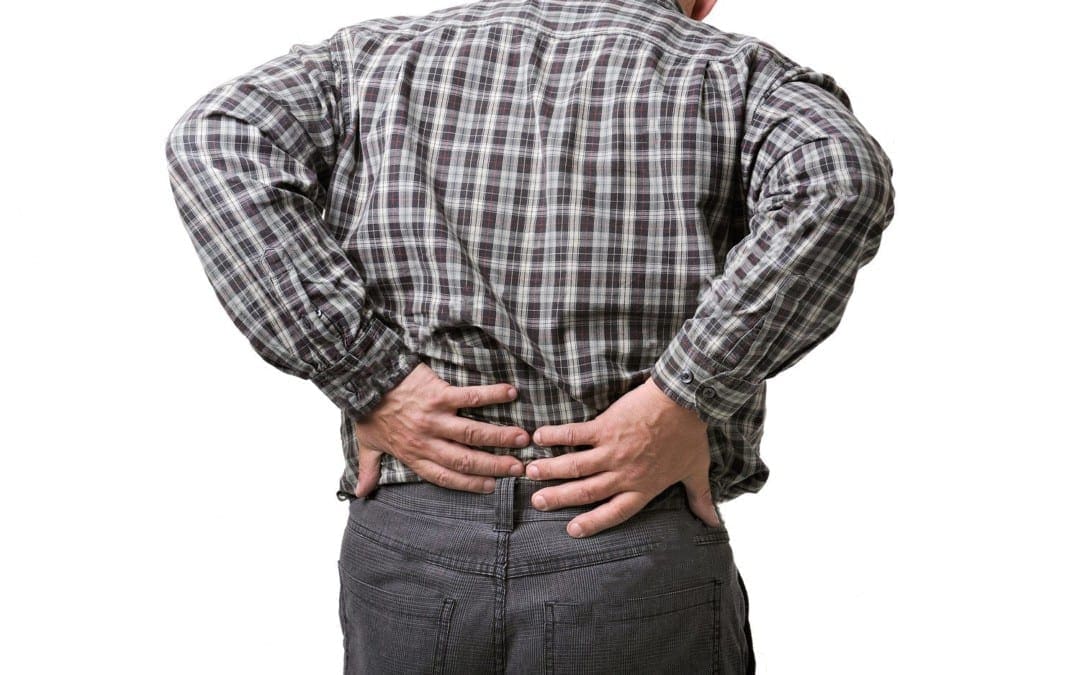
by Dr Alex Jimenez DC, APRN, FNP-BC, CFMP, IFMCP | Chiropractic, Lower Back Pain, Sciatica
Sciatica is a pain that radiates down the back, though the buttocks, and into the leg. The most common question people ask is: how long is this going to last? We want to know how long each attack will last and how long between flare-ups, but the answer may be more complicated than just simply giving a definite length of time. There are unfortunate individuals who have pain that doesn�t go away, often leaving them with suffering from chronic and persistent pain.
What most doctors and medical professionals can agree on is that there is no universally applicable answer to this question. This article will address questions such as, does sciatica go away on its own? What does sciatica feel like? And can sciatica go away? We will also discuss the causes of sciatica pain, severe complications of sciatica, and sciatica relief.
What Does Sciatica Feel Like?
Sciatica is a pain in the lower back or hip that radiates down into the buttocks and into the back of the leg along the sciatic nerve, with the pain often terminating in the foot. It is often the result of a pinched or inflamed sciatic nerve, which can occur after an injury, muscular strain, or herniated vertebral disc. Sciatic pain typically goes away on its own within a few weeks.
This type of pain can be difficult to describe, as it can take a number of different forms. It may feel like more of a cramping or numbing pain sensation that worsens when you sit, sneeze, or cough. It may be described as numbness combined with an electrical or burning sensation running down the leg, or even just as �pins and needles� along the leg. Pain associated with sciatica can be accompanied with muscle weakness, and it sometimes results in loss of bowel and bladder control, which would require emergency care treatment.
Current statistics show that 80 to 90 percent of all patients recover within six weeks without surgery.
How Long Does Sciatica Last?
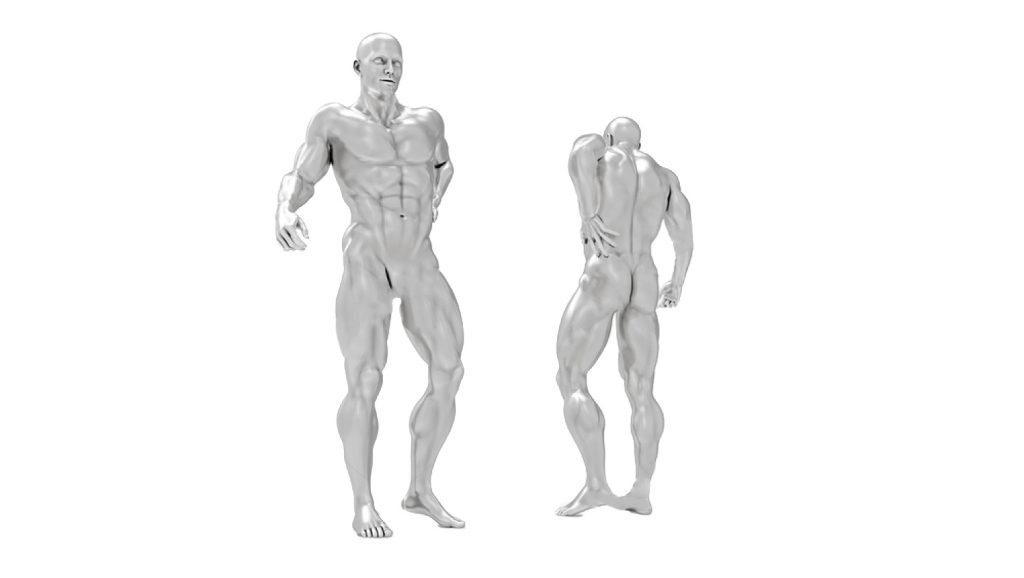
Acute Sciatica Attacks
Acute attacks are by far the most common complaint in those with sciatic pain, with symptoms coming and going. The frequency of flare-ups can vary from patient to patient, with some having more episodes and others only having them on occasion. The following are some of the facts associated with acute episodes of sciatica:
- Attack episodes do not typically last long in patients with a limited history of attacks�less than five years. These patients have occasional bouts of sciatic pain they might endure for about a week or two that gets better on its own. However, some may find these flare-up periods severely debilitating, as they are not accustomed to the pain, frequently leading to feelings of anxiousness and stress.
- There is no clear evidence of any triggers that lead to flare-ups of sciatica pain, but certain physical and emotional instigators may be potential causes.
- Statistically, acute pattern flare-ups may occur between two to six times a year, but there are patients who experience more or even less.
Chronic Sciatica Attacks
As the name suggests, chronic symptoms exist over longer periods of time or virtually all the time. This category of sciatic pain is often described as a pain that never really goes away. The severity of the symptoms, however, is often not as intense as it was when they first developed sciatica. Over time, their tolerance for pain has increased, allowing them to endure it for lengthy periods of time. The following are some facts associated with chronic episodes of sciatica:
- Chronic pain sufferers often report their symptoms to be less severe over time, along with decreased levels of anxiety and fear that once was associated with the condition
- It is rare for a person to just suddenly develop chronic sciatica from nowhere and have the pain remain for an extended period of time
- Chronic sciatic is, unfortunately, a lifelong condition, as it is one of the most difficult pain disorders to resolve
While there are cases of individuals who make full recovery from sciatic pain, the harsh truth of the matter is that the majority of patients will have some degree of pain for the rest of their lives. Sciatica does not respond well to most forms of treatment, with no accurate explanation for its cause.
Complications Of Sciatica
While most people fully recover from sciatic pain, it can still potentially cause some serious complications, such as:
When To See A Doctor?
Experiencing sciatic type symptoms should prompt you to go see your doctor right away, as it can drastically reduce the length of time you suffer from the condition. Your doctor may also help you determine if you are at risk for any further complication and provide treatment that is best for you. While mild sciatic pain can go away in time, it�s a good rule of thumb to call your doctor if you are finding your pain to be particularly unbearable.

Call Today!
Home � Bone Health � How long does sciatica last?
By: Devon Andre | Bone Health�
Related: Shoulder blade (scapula) pain causes, symptoms, treatments, and exercises
Share this information
People who read this article benefited from�
Related Reading:
Sacroiliac joint pain treatment of lower back pain possible with new implant method
Stomach spasms (abdominal muscle spasm): Causes and symptoms
Sources:
http://sciaticpaintreatment.southfloridapersonaltraining.com/How-Long-Does-Sciatica-Last.html
http://www.mayoclinic.org/diseases-conditions/sciatica/basics/symptoms/con-20026478
http://www.sciatica-pain.org/how-long-does-sciatica-last.html
https://www.drweil.com/health-wellness/body-mind-spirit/back-pain/sciatica/

by Dr Alex Jimenez DC, APRN, FNP-BC, CFMP, IFMCP | Chiropractic, Wellness
Ear problems can be excruciatingly painful, especially in children. With 10 million new cases every year, ear infections (otitis media) are the most common illness affecting babies and young children and the number one reason for visits to the pediatrician�accounting for more than 35 percent of all pediatric visits.

Almost half of all children will have at least one middle ear infection before they�re a year old, and two-thirds of them will have had at least one such infection by age 3. The symptoms can include ear pain, fever, and irritability. Otitis media can be either bacterial or viral in origin, and frequently results from another illness such as a cold. For many children, it can become a chronic problem, requiring treatment year after year, and putting the child at risk of permanent hearing damage and associated speech and developmental problems.
Standard treatment for most cases of otitis media is with antibiotics, which can be effective if the culprit is bacterial (antibiotics, of course, do nothing to fight off viruses). But, according to many research studies, antibiotics are often not much more effective than the body�s own immune system. And repeated doses of antibiotics can lead to drug-resistant bacteria that scoff at the drugs, while leaving the child screaming in pain.
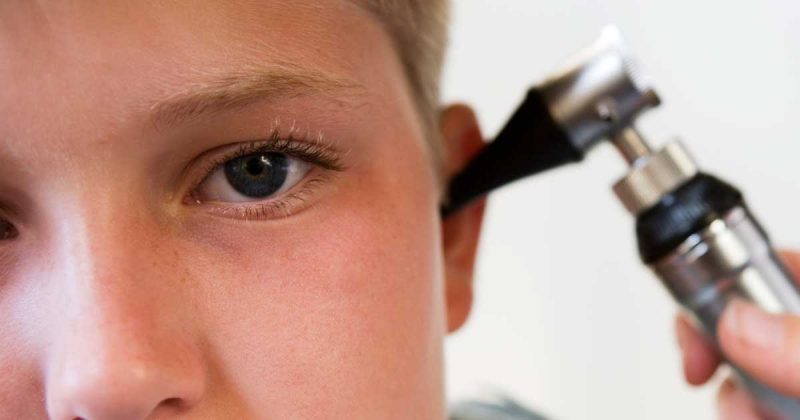
Frequent ear infections are also the second most common reason for surgery in children under 2 (with circumcision being the first). In severe cases�for example, when fluids from an ear infection haven�t cleared from the ear after several months, and hearing is affected�specialists sometimes prescribe myringotomy and tympanostomy, more commonly known as �ear tubes.� During the surgical procedure, a small opening is made in the eardrum to place a tube inside. The tube relieves pressure in the ear and prevents repeated fluid buildup with the continuous venting of fresh air. In most cases, the membrane pushes the tube out after a couple of months and the hole in the eardrum closes. Although the treatment is effective, it has to be repeated in some 20 to 30 percent of cases. And this kind of surgery requires general anesthesia, never a minor thing in a small child. If the infection persists even after tube placement and removal, children sometimes undergo adenoidectomy (surgical removal of the adenoids)�an option that is effective mostly through the first year after surgery.
Before yet another round of �maybe-they�ll-work-and-maybe-they-won�t� antibiotics or the drastic step of surgery, more parents are considering chiropractic to help children with chronic ear infections. Dr. Joan Fallon, a chiropractor who practices in Yonkers, New York, has published research showing that, after receiving a series of chiropractic adjustments, nearly 80 percent of the children treated were free of ear infections for at least the six-month period following their initial visits (a period that also included maintenance treatments every four to six weeks).
�Chiropractic mobilizes drainage of the ear in children, and if they can continue to drain without a buildup of fluid and subsequent infection, they build up their own antibodies and recover more quickly,� explains Dr. Fallon. She�d like to see her pilot study used as a basis for larger-scale trials of chiropractic as a therapeutic modality for otitis media.
Dr. Fallon uses primarily upper-cervical manipulation on children with otitis media, focusing particularly on the occiput, or back of the skull, and atlas, or the first vertebra in the neck. �Adjusting the occiput, in particular, will get the middle ear to drain. Depending on how chronic it�s been and on where they are in their cycle of antibiotics, children generally need to get through one bout of fluid and fight it off themselves.� That means, for the average child, between six and eight treatments. If a child�s case is acute, Dr. Fallon will check the ear every day, using a tympanogram to measure the ear and track the movement of the eardrum to make sure that it�s draining. �I�ll do adjustments every day or every other day for a couple of days if they�re acute, and then decrease frequency over time.�
Dr. Fallon, whose research garnered her the acclaim of childrearing magazines like�Parenting�and�Baby Talk, often sees great success when she treats a child for otitis media. �Once they fight it themselves, my kids tend to do very well and stay away from ear infections completely. Unless there are environmental factors like smoking in the house, an abnormally shaped Eustachian tube, or something like that, they do very well,� she says.
�I have two large pediatric groups that refer to me on a regular basis. In the winter, when otitis is most prevalent, I see five or six new children each week from each group,� says Dr. Fallon. �It�s safe and effective and something that parents should try, certainly before inserting tubes in their children�s ears.�
Chiropractic Care Can Help�
Come on in and talk to us about your child�s ear infections. Doctors of chiropractic are licensed and trained to diagnose and treat patients of all ages and will use a gentler type of treatment for children.�However, Texas chiropractors can answer any questions a patient�may have and refer them to a specialist, they must remain within the scope of their field which is the�Muscular�and the�Musculoskeletal system.

Call Today!
Source:
Dr. Matthew C. Supran, PA

by Dr Alex Jimenez DC, APRN, FNP-BC, CFMP, IFMCP | Natural Health
Middle-age white Americans with limited education are increasingly dying younger, on average, than other middle-age U.S. adults, a trend driven by their dwindling economic opportunities, research by two Princeton University economists has found.
The economists, Anne Case and Angus Deaton, argue in a paper released Thursday that the loss of steady middle-income jobs for those with high school degrees or less has triggered broad problems for this group. They are more likely than their college-educated counterparts, for example, to be unemployed, unmarried or afflicted with poor health.
“This is a story of the collapse of the white working class,” Deaton said in an interview. “The labor market has very much turned against them.”
Those dynamics helped fuel the rise of President Donald Trump, who won widespread support among whites with only a high school degree. Yet Deaton said his policies are unlikely to reverse these trends, particularly the health care legislation now before the House that Trump is championing. That bill would lead to higher premiums for older Americans, the Congressional Budget Office has found.
“The policies that you see, seem almost perfectly designed to hurt the very people who voted for him,” Deaton said.
Case and Deaton’s paper, issued by the Brookings Institution, follows up on research they released in 2015 that first documented a sharp increase in mortality among middle-aged whites.
Since 1999, white men and women ages 45 through 54 have endured a sharp increase in “deaths of despair,” Case and Deaton found in their earlier work. These include suicides, drug overdoses, and alcohol-related deaths such as liver failure.
In the paper released Thursday, Case and Deaton draw a clearer relationship between rising death rates and changes in the job market since the 1970s. They find that men without college degrees are less likely to receive rising incomes over time, a trend “consistent with men moving to lower and lower skilled jobs.”
Other research has found that Americans with only high school degrees are less likely to get married or purchase a home and more likely to get divorced if they do marry.
“It’s not just their careers that have gone down the tubes, but their marriage prospects, their ability to raise children,” said Deaton, who won the Nobel prize in economics in 2015 for his long-standing work on solutions to poverty. “That’s the kind of thing that can lead people to despair.”
It’s not entirely clear why these trends have affected whites much more than they have African-Americans or Hispanics, whose death rates are improving.
Case and Deaton note that many Hispanics are “markedly better off” than parents or grandparents who were born abroad, enabling a greater sense of optimism. African-Americans, they add, may have become more resilient to economic challenges given their long-standing disadvantages in the job market.
The data is clear, though: In 1999, the death rate for high school-educated whites ages 50 through 54 was 30 percent lower than the death rate for all African-Americans in that age group. By 2015, it was 30 percent higher.
The educational split is also growing. Even while the death rate for whites without a college degree is rising, the rate for whites who are college graduates is falling, Case and Deaton found.
Americans with less education are also faring much worse when compared with adults in other countries, Case and Deaton concluded. Death rates in Europe for people with limited education are falling — and in most countries, they’re falling faster than death rates for those with more education.
For those reasons, Case and Deaton discount the notion that government disability benefit programs are responsible for some of these problems by enabling more Americans to stop working. Social welfare programs in Europe are typically more generous yet haven’t caused a rise in death rates.
Given the long-running nature of these trends, many of which stem from the 1970s, reversing them could take years, Case and Deaton write. But there are immediate steps that could be taken, Deaton said in the interview. Routine prescriptions for opioids should be cut back.
And, “Europe has a much better safety net than we do, and they’re not seeing the same sort of problems as we are,” he said.

by Dr Alex Jimenez DC, APRN, FNP-BC, CFMP, IFMCP | Natural Health
With spring right around the corner, chances are you�ll begin to show symptoms of the “Spring Fever.” It�s not an actual disease in a conventional sense, say experts, and you won�t be bed ridden. But you may experience biological problems and physical symptoms that actually do exist.
�While it�s not a recognized medical condition, people do experiences changes in mood and energy level as spring approaches,� Dr. Sharad Paul, author of �The Genetics of Health: Understand Your Genes for Better Health,� tells Newsmax Health.
�This is definitely a disorder of wealthy nations who pay more attention to the changes in weather as opposed to parts of India and Asia for example where people can�t afford to dwell on the weather. We tend to hibernate and become depressed during the dark winter months and then come to life as the temperatures soar.
One way to minimize the effect of Spring Fever is to maintain exercise levels throughout the winter even if you have to work out indoors and make sure you keep your vitamin D levels stable, Paul says.
�You may need to take supplements if you simply can�t get enough sunshine,� he adds. �You should also try to maintain a similar diet year round so you don�t gain too much weight in winter and then have to shed pounds in the spring.�
Here are six symptoms of Spring Fever to watch for:
You have a surge of energy. Maybe it�s that extra dose of vitamin D from springtime sunshine that gives folks the extra energy to start jogging after work or taking lunch hour walks. Dr. Miguel Smolensky, Ph.D., professor at the University of Texas-Houston School of Public Health, says it may be the image of the body �springing to life� after winter doldrums that gives us the urge to move more.
You�ve got romance on the brain. This is partly because both men and women are wearing less clothing say experts, but it�s also because sunlight helps us release endorphins. A study conducted by the University of Tromso in Norway showed that these extra endorphins put us in a better mood and increase physical attraction.
You are eating lighter. If you start to crave fresh salads and fruit, you�re not alone. Paul says that typically, people eat more and exercise less during the cold winter months. That�s partly because our ancestors used to experience a period of famine during the winter months and to plan for it, they would eat heavier foods just like bears who stock up for winter hibernation. Also in many parts of the country, it�s harder to get reasonably priced fresh fruits and veggies during the off season.
You�re sleeping less. In spring, you may find it harder to sleep at your usual time and that�s not just because we switch to daylight saving time. The additional sunlight tells our bodies to produce less melatonin, a hormone secreted by the pineal gland that regulates our circadian rhythm and natural wake-sleep patterns.
Your general mood brightens. Paul says that the onset of more sunshine in spring and the abundance of color bring us out of our �winter blues� and puts us in a more positive place. You find yourself feeling happier and more sociable. We also experience an increase in production of the �happy hormone� serotonin during the transition to spring.
You may become obsessed with cleaning. The urge to clean the house from top to bottom, and spruce up the yard are sure signs of Spring Fever. Although spring cleaning is probably not caused by biology, it has been so ingrained in our Western culture that our subconscious mind takes over, urging us to get out the cleaning supplies and scrub away winter grime. Cleaning services and products are known to boost their advertising during springtime, cashing in on our natural urge to purge away the old and make way for the new.

by Dr Alex Jimenez DC, APRN, FNP-BC, CFMP, IFMCP | Chiropractic, Veterans
Hundreds of thousands of veterans of the Persian Gulf War returned home with puzzling health issues that doctors couldn’t explain. Now, 25 years later, Gulf War Illness (GWI) continues to affect 25-32 percent of the 700,000 U.S. veterans who served in the 1990-1991 war.
The condition is characterized by symptoms such as chronic headache, cognitive difficulties, debilitating fatigue, widespread pain, respiratory problems, sleep problems, gastrointestinal problems, and other unexplained medical abnormalities.
Twenty years of scientific research has traced these symptoms to Gulf War chemical exposures and the drugs taken during deployment that were meant to prevent or counteract these exposures. However, the vast majority of these studies have focused on neurological effects, but none have fully explained the body’s pathways GWI uses to affect the brain.
Now, a study from the University of South Carolina has found a gastrointestinal link that could not only help explain the health issues facing veterans, but may also point to new treatment options.
Researchers found that the chemicals, etc. that veterans were exposed to altered the microbiome � the bacteria that inhabit the gut. The affected microbiota then produce endotoxins, which pass through a thinned lining of the gut (called a leaky gut) and into the blood where they circulate throughout the body.
These compounds trigger an inflammatory response that, in turn, initiates several neurological abnormalities commonly observed in GWI.
“Humans and animals have specific types of bacteria that help aid various physiological processes, including digestion, absorption, immunity and gut integrity, and when external factors change the bacterial composition in our digestive systems, we have problems,” says researcher Saurabh Chatterjee. “Obesity, metabolic syndrome, inflammatory bowel syndrome, and liver disease have already been linked with changes in bacterial composition of the gut.”
The study showed that not only did exposures to the suspected causes of� GWI lead to inflammation in the intestines, they also lead to inflammation in the brain.
“Usually, the gut is very selective about letting only certain elements from what we eat and drink into our blood � thanks to good bacteria,” Chatterjee explained. “But when the composition changes due to an increase in certain bad bacteria, this causes disruption to the mucosal lining of the intestinal walls � leading more intestinal contents to leak into the blood.”
Once in the blood, the toxins travel throughout the body and affect different organs, including the brain. Once in the brain, the toxins cause the inflammation and neurological symptoms that previous studies have extensively linked to GWI.
“We know that many diseases like obesity, liver disease, and inflammatory bowel syndrome can be cured or at least decreased by consuming good bacteria, like probiotics,” Chatterjee said. “Now that this connection has been established, it opens the door to new studies where GWI patients take probiotics for a longer period of time and, hopefully, see improvement in symptoms connected with metabolic syndrome, gastrointestinal disturbances, and maybe even neuroinflammation.”
Recent studies have indicated that gut bacteria have an impact on a wide range of health issues. UCLA researchers found that mice fed beneficial bacteria produced microbes known to prevent cancer. Researchers suggested ingesting probiotics like yogurt or probiotic supplements could help prevent cancer from developing.

by Dr Alex Jimenez DC, APRN, FNP-BC, CFMP, IFMCP | Integrative Functional Wellness, Integrative Medicine, Natural Health
The practice of yoga coupled with deep breathing eased the symptoms of individuals suffering from depression without the use of potentially harmful medication, according to a recent study published in the Journal of Alternative and Complementary Medicine.
Major depressive disorder or MMD, or depression, is a common mood disorder causing sadness and serious mental health issues. Depression affects about 16 million Americans each year, according to the Centers for Disease Control and Prevention.
Researchers from Boston University Medical Center who conducted the latest study concluded that twice weekly yoga classes in addition to home practice helped brighten the mood of participants not taking antidepressants and for those who claimed their medication wasn�t working.
Since antidepressants come with common side effects such as nausea and insomnia, experts say that this new study offers an exciting and safe alternative treatment to the treatment of this common disorder.
Dr. Delia Chiaramonte, director of education, at the Center for Integrative Medicine at the University of Maryland School of Medicine, tells Newsmax Health that this new study solidifies the research that�s already been done examining the benefits of yoga not only for the body, but for the mind as well.
�There are multiple studies that suggest the benefits of yoga in people suffering from depression,� she says. �Exercise has also shown to have significant benefit in alleviating depression as well as meditative practices. Since the practice of yoga combines both physical exercise and meditation, in my opinion, it should be considered as an adjunct treatment for depression.
�It can be used alongside other forms of exercise, cognitive strategies, meditation, guided imagery and in severe cases, antidepressant medication.�
While the participants in the Boston University study practiced two to three 90 minute sessions of Iyengar yoga along with their home practice, experts say that a few minutes of daily practice can produce powerful results.
Iyengar yoga is a style that incorporates precise movements and alignments to balance the body and mind. Kundalini yoga, on the other hand, works on the energy systems of the body and can create equanimity in minutes to help battle depression, says Dr. Gregg Biegel, a certified Kundalini instructor, so you get more bang for your buck.
�People who are diagnosed with depression are almost always prescribed either short term or long term medication to combat their symptoms. But the harmful side effects of these drugs can sometimes make those symptoms worse,� he tells Newsmax Health.
�That�s like putting a Band-Aid on a severed artery. Scientists are now exploring alternative approaches to a healthier lifestyle without medication, and yoga, an ancient art that�s enjoying quite a revival in this stressful society, is a valuable tool.
�Human beings are complex emotional animals. Our behavior is directly controlled by the central nervous system, the autonomic nervous system and our glandular system. When these control systems are out of balance, you experience a wide range of emotions from nervousness to anger to anxiety and depression.�
The practice of yoga, says the expert, can help regulate and balance the body�s control systems by incorporating breathe and movement.
�Within minutes of practicing these physiologically powerful series of movements we call kriyas we can banish the blues and stave off depression,� he says.
While Kundalini yoga is considered to be the �fast track� to establishing equanimity between body and mind, it is important to study with a certified teacher, says Biegel. Since there as many styles of yoga as there are flavors of ice cream, find a class that suits your needs and preferences.
�Practicing yoga on a regular basis combined with eating a healthy diet and enjoying a positive lifestyle provides a natural alternative to medication in battling depression,� says Biegel.

by Dr Alex Jimenez DC, APRN, FNP-BC, CFMP, IFMCP | Chiropractic
Surgery is a common approach to treat carpal tunnel syndrome. But, physical therapy may work just as well, a new study indicates.
Researchers found that physical therapy — particularly so-called manual therapy — improved hand and wrist function and reduced pain as effectively as a standard operation for the condition.
Moreover, after one month, physical therapy patients reported better results than those who underwent surgery.
“We believe that physical therapy should be the first therapeutic option for almost all patients with this condition,” said lead study author Cesar Fernandez de las Penas.
“If conservative treatment fails, then surgery would be the next option,” said de las Penas, a professor of physical therapy at King Juan Carlos University in Alcorcon, Spain.
Also, one extra benefit of therapy over surgery may be cost savings, he noted.
Carpal tunnel syndrome occurs when the median nerve, which runs from the forearm into the palm of the hand, becomes squeezed at the wrist. It often arises from repetitive motions required for work, such as computer use or assembly line work.
Symptoms usually start gradually, with patients noticing numbness and weakness in the hand and wrist.
Surgery for the condition generally involves cutting a ligament around the wrist to reduce pressure on the median nerve, according to the U.S. National Institutes of Health.
For this study, de las Penas and his colleagues followed 100 women from Madrid who had carpal tunnel syndrome. Half were treated with physical therapy and half underwent surgery.
For three weeks, the therapy patients received weekly half-hour manual therapy sessions — meaning therapists only used their hands. The therapists focused on the neck and the median nerve. They also applied manual physical therapy to the shoulder, elbow, forearm, wrist and fingers. On their own, patients performed neck-stretching exercises at home.
After one month, the therapy group reported greater daily function and greater “pinch strength” between the thumb and forefinger compared to the surgery patients. After three, six and 12 months, however, improvements were similar in both groups. All participants experienced similar reductions in pain.
Study co-author Joshua Cleland is a professor with the physical therapy program at Franklin Pierce University in Rindge, N.H. “Manual physical therapy may be just as beneficial in improving function and symptom severity as surgery despite the severity of their condition,” he said, noting that 38 percent of those in the therapy group had “severe” carpal tunnel syndrome.
“These manual physical therapy techniques are commonly used here in the United States as well and should become a standard of practice for physical therapists working with patients who have carpal tunnel syndrome,” Cleland said.
Dr. Daniel Polatsch is co-director of the New York Hand and Wrist Center at Lenox Hill Hospital in New York City. He treats several hundred cases of carpal tunnel syndrome each year, of which 15 to 20 percent require surgery.
Treatment should be decided on a case-by-case basis, Polatsch said. Mild cases may be treated with conservative approaches that can include splinting, injections, therapy and activity modification, he added.
“Surgery is necessary when there is muscle weakness or atrophy from the nerve being compressed at the wrist,” he said.
Polatsch added that this type of surgery is generally safe and effective.
Still, operations can have complications, said Cleland. He cited a previous research finding that “approximately 25 percent of individuals undergoing surgery for carpal tunnel syndrome experience treatment failure with half of those requiring an additional surgical procedure.”
According to the researchers, almost half of all work-related injuries are linked to carpal tunnel syndrome. And, more than one-third who undergo surgery for the condition are not back at work eight weeks later.
Because this was a small study focusing only on women, the study authors said that future studies need to examine men.
The study results were published in the March issue of the Journal of Orthopedic & Sports Physical Therapy.

by Dr Alex Jimenez DC, APRN, FNP-BC, CFMP, IFMCP | Diets, Fitness
Just a bit of vigorous exercise each day could help some children and teens reduce their risk of developing heart problems and diabetes, researchers say.
The new study looked at nearly 11,600 kids, aged 4 to 18, in the United States, Brazil and Europe.
The investigators found that replacing light exercise with as little as 10 minutes a day of intense activity may provide significant cardiometabolic benefits for young people who have relatively large waists and elevated levels of insulin in their blood. These are factors that put them at risk for developing heart problems and metabolic diseases, such as type 2 diabetes.
“The results suggest that substituting modest amounts of vigorous physical activity for longer-duration light exercise may have cardiometabolic benefits above and beyond those conveyed by moderate activity and the avoidance of sedentary behavior,” lead author Justin Moore said.
Moore is an associate professor of family and community medicine at Wake Forest Baptist Medical Center in Winston-Salem, N.C. He noted that more research is needed because additional factors that contribute to disease risk — such as diet and genetics — need to be taken into account.
“If such studies provide robust results, a relatively brief but intense dose of physical activity — perhaps as little as 10 minutes day, which is certainly feasible for most youth — could turn out to be part of a ‘prescription’ for children to achieve or maintain cardiac and metabolic health,” Moore said in a medical center news release.
The study was published recently in the journal Medicine & Science in Sports & Exercise.

by Dr Alex Jimenez DC, APRN, FNP-BC, CFMP, IFMCP | Natural Health
Lowering your salt intake could mean fewer trips to the bathroom in the middle of the night, a new study suggests.
Most people over age 60, and many even younger, wake up to pee one or more times a night. This is called nocturia. This interruption of sleep can lead to problems such as stress, irritability or tiredness, which can affect quality of life.
There are several possible causes of nocturia, including — as this study found — the amount of salt in your diet.
“This is the first study to measure how salt intake affects the frequency of going to the bathroom, so we need to confirm the work with larger studies,” said study leader Tomohiro Matsuo, from Nagasaki University in Japan.
“Nighttime urination is a real problem for many people, especially as they get older. This work holds out the possibility that a simply dietary modification might significantly improve the quality of life for many people,” he said.
The study included more than 300 Japanese adults. They all had high salt intake and sleeping problems. They were given instructions and help to reduce their salt intake and followed for 12 weeks.
The American Heart Association recommends that people consume no more than 2,300 milligrams (2.3 grams) of sodium daily. That’s about a teaspoon of salt.
Ideally, the AHA says, people shouldn’t have more than 1,500 milligrams (1.5 grams) of sodium per day. Table salt is made up of about 40 percent sodium, according to the AHA.
More than 200 people in the study reduced their salt intake. They went from an average of 11 grams per day to 8 grams a day.
With that reduction in salt, the average number of nighttime trips to the bathroom to urinate fell from 2.3 to 1.4 times per night. The number of times people needed to urinate during the day also decreased.
The drop in nighttime bathroom visits also led to an improvement in quality of life, researchers said.
In comparison, the nearly 100 participants whose average salt intake rose — from 9.6 grams per night to 11 grams nightly — had an increase in nighttime trips to the bathroom, from 2.3 to 2.7 times a night, the study revealed.
The study was to be presented Sunday at the European Society of Urology annual meeting, in London. Findings presented at meetings are typically viewed as preliminary until they’ve been published in a peer-reviewed journal.
Dr. Marcus Drake is a professor at the University of Bristol in England and leader of the working group for the ESU Guidelines Office Initiative on Nocturia. “This is an important aspect of how patients potentially can help themselves to reduce the impact of frequent urination. Research generally focuses on reducing the amount of water a patient drinks, and the salt intake is generally not considered,” he said.
“Here we have a useful study showing how we need to consider all influences to get the best chance of improving the symptom,” Drake said in an ESU news release.

















